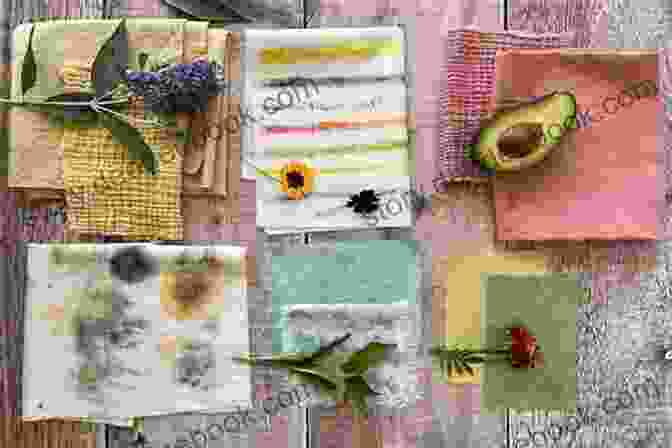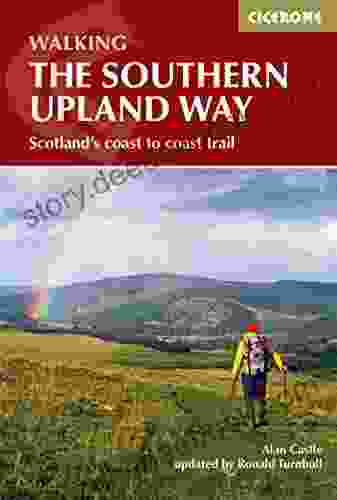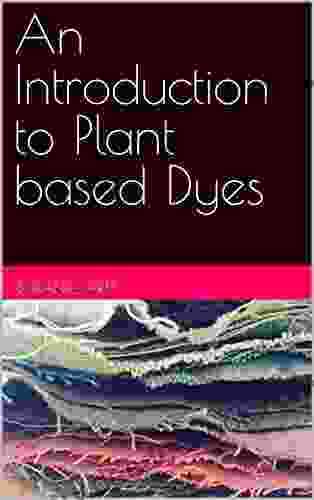An Introduction to Plant-Based Dyes: Unveiling the Secrets of Natural Coloration


In a world awash with synthetic hues, natural dyes woven from the tapestry of plants offer a refreshing return to the embrace of nature's artistry. Plant-based dyes, with their earthy tones, subtle variations, and evocative echoes of the natural world, have captivated artists, artisans, and eco-conscious individuals for centuries.
4.8 out of 5
| Language | : | English |
| File size | : | 4748 KB |
| Text-to-Speech | : | Enabled |
| Screen Reader | : | Supported |
| Enhanced typesetting | : | Enabled |
| Print length | : | 17 pages |
| Lending | : | Enabled |
Unveiling Nature's Color Palette: A Glimpse into Plant Dyes
From the verdant leaves of spinach to the fiery blossoms of poppies, the plant kingdom unveils a kaleidoscope of colors waiting to be extracted and transformed into vibrant dyes. Each plant species holds within its tissues a unique blend of pigments, the building blocks of color.
- Chlorophyll: The ubiquitous green pigment responsible for photosynthesis, chlorophyll can be extracted from leafy greens, such as spinach, kale, or stinging nettle, to yield shades of vibrant green.
- Carotenoids: These yellow, orange, or red pigments are found in carrots, tomatoes, and turmeric, lending warm and inviting hues to textiles.
- Anthocyanins: Responsible for the rich reds, purples, and blues found in berries, fruits, and flowers such as hibiscus and beets, anthocyanins infuse textiles with a sense of depth and vibrancy.
- Tannins: These polyphenols, commonly found in barks, nuts, and leaves, produce a range of earthy tones, from soft beiges to deep browns.
The Art of Plant Dyeing: A Journey of Patience and Precision
Harnessing the power of plant dyes is an art that requires patience, precision, and an intimate understanding of the natural world. The process involves several key steps:
- Plant Preparation: The first step is to prepare the plant material. Leaves, flowers, or roots are typically harvested at their peak color and dried or fresh, depending on the specific dye.
- Mordanting: Before dyeing, the fabric must be mordanted using a natural substance like alum or vinegar. This process helps fix the dye molecules to the fabric, ensuring lasting colorfastness.
- Dye Extraction: The dried or fresh plant material is then steeped in hot water, releasing its pigments into the dye bath. The length of time and temperature of the bath influence the intensity and shade of the color.
- Dyeing: The mordanted fabric is then immersed in the dye bath and gently agitated to ensure even dyeing. The fabric is left to soak for several hours or overnight, depending on the desired color depth.
- Rinsing and Finishing: After dyeing, the fabric is thoroughly rinsed with cold water to remove any excess dye. It is then dried and heat-set to enhance colorfastness.
The Allure of Plant-Based Dyes: Beyond Color, a Canvas for Storytelling
The appeal of plant-based dyes extends far beyond their aesthetic allure. They embody a sustainable, eco-friendly approach to coloration, minimizing the environmental footprint of the textile industry.
Moreover, plant dyes lend a sense of authenticity and connection to nature. Each dye carries with it the story of the plant from which it was derived, creating a tangible link between the wearer and the natural world.
The subtle variations and imperfections inherent in plant dyes embrace the beauty of the imperfect. They celebrate the uniqueness of each garment, transforming it into a canvas for storytelling, where every nuance and irregularity whispers of the plant's journey.
Harnessing the Power of Plant Dyes: A Guide for Aspiring Artisans
For those aspiring to explore the world of plant-based dyes, resources abound. Workshops, online courses, and comprehensive books provide invaluable guidance on plant selection, dye extraction techniques, and mordanting methods.
Experimentation and a keen eye for color are indispensable qualities for successful plant dyeing. By immersing yourself in the process, observing the subtle changes in color as the plant material interacts with the fabric, you will develop an intuitive understanding of the art.
: Reconnecting with Nature through Plant-Based Dyes
In an era marked by mass production and synthetic materials, plant-based dyes offer a refreshing return to the embrace of nature's artistry. They invite us to reconnect with the natural world, appreciate the beauty of imperfection, and foster a deeper understanding of the delicate balance of our ecosystem.
Through the art of plant dyeing, we not only adorn ourselves with vibrant and sustainable hues but also embark on a transformative journey, where each garment becomes a testament to the beauty and interconnectedness of all living things.
4.8 out of 5
| Language | : | English |
| File size | : | 4748 KB |
| Text-to-Speech | : | Enabled |
| Screen Reader | : | Supported |
| Enhanced typesetting | : | Enabled |
| Print length | : | 17 pages |
| Lending | : | Enabled |
Do you want to contribute by writing guest posts on this blog?
Please contact us and send us a resume of previous articles that you have written.
 Book
Book Chapter
Chapter Genre
Genre Reader
Reader Library
Library Paperback
Paperback Magazine
Magazine Newspaper
Newspaper Paragraph
Paragraph Sentence
Sentence Bookmark
Bookmark Glossary
Glossary Foreword
Foreword Preface
Preface Synopsis
Synopsis Footnote
Footnote Scroll
Scroll Codex
Codex Tome
Tome Bestseller
Bestseller Library card
Library card Biography
Biography Reference
Reference Encyclopedia
Encyclopedia Dictionary
Dictionary Narrator
Narrator Card Catalog
Card Catalog Borrowing
Borrowing Stacks
Stacks Archives
Archives Research
Research Scholarly
Scholarly Lending
Lending Academic
Academic Literacy
Literacy Dissertation
Dissertation Storytelling
Storytelling Awards
Awards Theory
Theory Textbooks
Textbooks Gerald Litwack
Gerald Litwack Pie Corbett
Pie Corbett Steve Cook
Steve Cook Clement C Moore
Clement C Moore David Gilman
David Gilman Julius St Clair
Julius St Clair Steven Zahavi Schwartz
Steven Zahavi Schwartz Sheila Gates
Sheila Gates Julia Golding
Julia Golding Natasha Sizlo
Natasha Sizlo Worth Books
Worth Books Mantius Cazaubon
Mantius Cazaubon Mallory Monroe
Mallory Monroe Tom Big Al Schreiter
Tom Big Al Schreiter Carol Giardina
Carol Giardina Guy Norris
Guy Norris Kathleen Ball
Kathleen Ball Chris Harvard
Chris Harvard Francis Okumu
Francis Okumu Casey Christie
Casey Christie
Light bulbAdvertise smarter! Our strategic ad space ensures maximum exposure. Reserve your spot today!
 Colton CarterFollow ·3.4k
Colton CarterFollow ·3.4k Bret MitchellFollow ·18.6k
Bret MitchellFollow ·18.6k Jesus MitchellFollow ·10.7k
Jesus MitchellFollow ·10.7k Dominic SimmonsFollow ·17.7k
Dominic SimmonsFollow ·17.7k Aleksandr PushkinFollow ·18.8k
Aleksandr PushkinFollow ·18.8k Thomas MannFollow ·12.6k
Thomas MannFollow ·12.6k Zachary CoxFollow ·2.2k
Zachary CoxFollow ·2.2k Jeff FosterFollow ·18.4k
Jeff FosterFollow ·18.4k

 Matt Reed
Matt ReedTrekking the Breathtaking Scotland Coast to Coast Trail:...
Lace up your...

 Deacon Bell
Deacon BellThe Easy Guide to Playing Piano Scales: Piano Lessons for...
Piano scales...

 Fred Foster
Fred FosterUnveiling the Enthralling Best Friends to Lovers Romance...
Westbury Warriors: Where Love...

 T.S. Eliot
T.S. EliotHow To Dramatically Increase Your Profits And Sales...
Are you looking...

 Aaron Brooks
Aaron BrooksSummer at Stallion Ridge by Delores Fossen: A Thrilling...
Immerse Yourself in the...
4.8 out of 5
| Language | : | English |
| File size | : | 4748 KB |
| Text-to-Speech | : | Enabled |
| Screen Reader | : | Supported |
| Enhanced typesetting | : | Enabled |
| Print length | : | 17 pages |
| Lending | : | Enabled |












